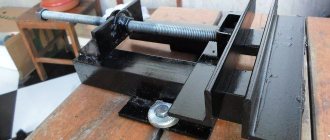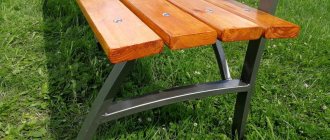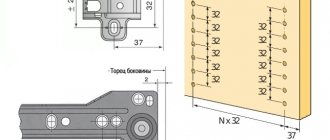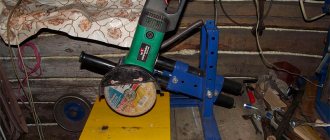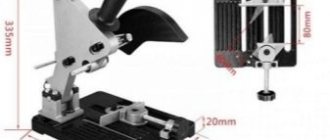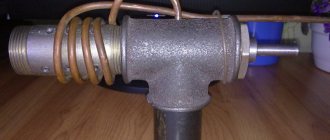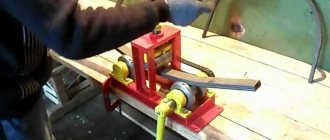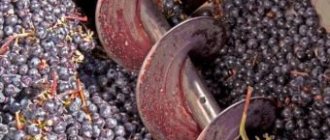In order to make makukha yourself, you will need to follow these recommendations.
The first method of preparing makukha contains the following steps:
- Make a homemade press.
- Prepare metal molds in the form of a square with holes in the bottom so that the oil can drain.
- Roast fresh sunflower seeds in a frying pan.
- Grind the toasted seeds in a coffee grinder or blender.
- Pour the resulting mixture into a squeeze pan so that it only fills the pan halfway.
- Place the mold under the press and start tightening a special screw, which will compress the mixture and oil will begin to drip from the mold.
- After completing the procedure, you need to leave the crown alone for half an hour so that it cools down.
- After cooling, the cake is ready.
The second method of making makukha:
- Take a working jack.
- Take the cake of already ground seeds, ready-made flour, boiled peas and shortbread.
- Mix all ingredients and press with a jack.
- Leave the resulting mush to dry in a well-ventilated area for five days, after which you can use it.
Preparing baits from makukha
For fishing purposes, pressed cake in the form of circles is used (crumbed cake can serve exclusively as bait). Their thickness should exceed 3 cm and not break in the hands, and emit a pleasant aroma. Makukha tastes like hard halva. A number of sellers want to get rid of old stocks and rub the circles with fresh oil, but then they have a bitter aftertaste.
The bait must first be prepared by sawing huge “tablets” into pieces of the required size. You will need a fine-toothed hacksaw. You need to cut rectangles with a configuration of 3x3x6 cm. The dust generated during work will be useful for preparing other baits. The prepared bars must be placed in a polyethylene bag and sealed tightly.
Many manufacturers produce pressed meal in the form of sticks, add flavorings to the composition and pack it in hermetically sealed containers. The option is the most preferable, but it is also the most expensive.
Bait preparation
It is necessary to make blanks from purchased or prepared circles. To do this, we prepare a workspace, for example, a stool with a newspaper laid on it. Then, using a fine-toothed hacksaw, we begin to cut the piece. The cutting technology looks like this:
Step back 3 cm from the edge and make the first cut, putting the resulting crescent into a bag, where we will subsequently remove all the trimmings and dust. This will be useful for bait.
- Step back another 3 cm, make a saw, the result is a block 3x3x6 cm. Trim the edges of the block.
- Next, we also make saws of 3 cm each, and cut strips of 6 cm each. We get about 20 such blanks from the circle.
- Collect all the remains from the newspaper into a bag, and put the blanks in a plastic bag, which is hermetically sealed.
Further actions with the prepared bait will depend on the gear used.
Homemade bait
If the quality of the material purchased in a store or market is in doubt, the cake can be prepared at home. Ingredients and equipment needed:
- raw sunflower seeds;
- blender or old coffee grinder - grinding;
- molds with holes - elimination of oil;
- special press - compacting the slurry (it is advisable to buy a ready-made one or try to make it yourself);
- dishes - evaporation.
Without a device that compresses the crushed product, it is almost impossible to create cake at home.
How and from what to make a crown press
To make the device, you will need a pipe up to 40 cm long and an internal diameter of 5-6 cm. 1.5 mm holes are drilled along the entire distance of the metal cylinder every 2 cm. On one side the pipe is closed with a plug in the form of a bottle cap with a cotter pin, and on the other – with a screw press.
Some anglers use jacks, but in such cases it is not always possible to compress the mass to the required consistency.
Homemade makukha production begins with roasting the seeds until half cooked. Then they are crushed in any way (coffee grinder, blender, mortar). The molds are filled tightly with the slurry, then using a special tamping device, the mass is compressed until it stops and at the same time heated in a saucepan. The cake will stick together and the liquid oil will drain.
The procedure lasts about 40 minutes, and all this time you need to press down the mass with force. Remove the resulting flour from the molds only after it has cooled. The pieces should be hard and baked. Carefully clean the mahogany press and store it.
Fishing gear
To fish with such a bait, you need a special equipment - a machka. It can be purchased at the store, or you can also make it yourself. The classic version of the equipment consists of a rod, a vein, a sinker and a double leash. The principle of its operation is no less simple:
- a piece of topcoat is secured with a self-tightening knot;
- cuts are made along the edges of the nozzle;
- hooks on leashes are inserted into the recesses;
- the structure is connected to the main fishing line with a carabiner on a swivel.
In the new type of makushatniks, a hole is made in the dense pulp with a special drill, and a latch in the form of a small eye is inserted into it. The hook is hidden in the corner of the bait.
Adviсe
- According to the recommendations of experienced fishermen, it is better to hide the hooks in the top of the head, having made holes for them in advance;
- embedded hooks and fishing line should be disguised using bread crumb or clay;
- to add a more attractive aroma to the fish, you can add a little honey-scented flavoring to the bait;
- you shouldn’t rush and hook the fish quickly, you need to wait until it swallows the hook well, because otherwise it will either fall off or not be caught at all;
- you need to catch the fish slowly , without making sudden movements with the rod;
- To prevent the fish from falling off the hook during survival, it must be starved out and only then calmly pulled out of the reservoir.
Features and advantages of makukha
Features include ease of preparation:
- Makukha is prepared without special equipment or knowledge.
- Using a press you can produce a high-quality product. It is also permissible to use a regular jack, which is used to compress the dust into briquettes.
- There is a special board for rolling out boilies, which facilitates the manufacturing process.
The advantages include low cost and natural ingredients.
Briquettes made independently are liked by fish, as they distinguish between natural and artificial odors, and they always prioritize natural ingredients. Therefore, it is recommended to make makukha only at home.
What can you catch on top?
You can catch carp, crucian carp, and carp on the top.
Carp can be easily caught using the top of the fish; it is attracted by the aroma of peas and sunflowers.
When fishing for carp, it is recommended to use a heavy sinker and change the top more often. The carp prefers places with strong currents, where it is quickly washed away.
When fishing for crucian carp, makuha is often used for feeding, but when used as bait, you can catch quite large fish.
Do-it-yourself makukha
Prepare makukha for fishing with your own hands at home. There are several recipes for preparing bait; they differ only in the ability to use certain equipment.
Pea flour
Pea powder is the main bait for catching carp. To prepare it you will need:
- 100 g peas.
- 50 g semolina porridge.
- Raw chicken egg.
- Corn oil.
- Honey.
- It is necessary to grind the peas in a blender.
- Add semolina and mix.
- In another bowl, add the egg and 1 tbsp. l. corn oil and honey.
- Later, transfer everything into one bowl and mix until smooth.
- Roll boilies from this dough to the required size and boil them in salted water. After the boilies float up, wait another minute.
- Next you should dry the boilies.
Before using it for fishing, you need to add butter to the boilie bag. Carp will love this scent.
Recipe from "Mikhalych"
To prepare you will need the following:
- Jack.
- Glass with piston.
- Metal plate.
- Sunflower seeds - 30%.
- Bird food - 30%.
- Peas - 15%.
- Crackers - 15%.
- Nuts - 10%.
- Some popcorn.
- Grind all ingredients in a blender.
- Pour them into a glass and press down with a piston.
- Place a metal strip on top and clamp it with a jack.
- Pump the jack up to strength and leave for 4 hours.
- Place the finished briquettes in the air and dry for about a week.
Preparing a briquette is a labor-intensive process that takes 3-4 hours. When pressed with a jack, very hard briquettes are obtained that take longer to dissolve in water.
Seed dust
- Sunflower seeds are lightly toasted.
- Then they need to be crushed with a knife, blender, mortar or any convenient method.
- Metal molds are filled with crushed seeds.
- Using a masher or a press, you need to press the resulting porridge into the mold as hard as possible.
- During all manipulations, the mold should be heated.
- You should not immediately remove the porridge from the mold, otherwise it will begin to disintegrate. It's worth waiting for it to cool down.
- Cooking takes about 1 hour.
- After cooking, makukha should be stored in jars with pressed oil.
- The molds must have removable bottoms to easily remove the briquettes.
- It is not recommended to prepare briquettes long before use, otherwise they will lose their natural smell.
- Makukha should be stored in jars with the lid closed.
- The oil that remains after cooking is perfect for bait.
Drawings with dimensions of floor kitchen cabinets and pencil cases
The standard dimensions of floor-standing tables/cabinets for the kitchen are largely determined by the dimensions of the built-in household appliances.
The tabletop cannot be narrowed by changing the depth of the bottom row if a standard sink and hob with 4 burners, an oven, and a dishwasher are installed. In all other cases it is possible. There are sinks with a narrowed platform, washing machines of smaller depth and free-standing stoves; the hob with 2 burners can be positioned lengthwise.
The standard height of the bottom row of the kitchen is 850 mm. It is designed for “standard” human height. If you are taller or shorter, it is better to change it to suit your height. Working in such a kitchen will become much more convenient.
The width of the lower kitchen modules is quite flexible. The narrowest cabinet table is designed for a bottle holder and has a width of 150-200 mm. And the widest one can be designed up to 900 mm and equipped with drawers or nested shelves.
There are certain standards regarding the corner modules of the lower row of the kitchen. They are based on providing access to the internal space of the table-cabinet. It is undesirable to make the front of a corner cabinet smaller than 350-400mm. Therefore, standard sizes vary within 900x900 mm from the corner for L-shaped and trapezoidal, 1000x600 mm for tables with raised panels.
End modules are designed according to the residual principle. For lengths of 200-300 mm it is possible to develop a version with a closed door. If there is less space left for rounding the tabletop, then it is better to leave open shelves.
The dimensions of kitchen cabinets and high cabinets with a tabletop largely depend on the height of the entire kitchen unit and the features of the overall design. Based on their dimensions, the internal contents are developed and working drawings are drawn up.
If you are planning to equip your kitchen with built-in appliances, we recommend that you familiarize yourself with the nuances of installing an oven.
Top fishing technique
The fish smells the smell of the top from a great distance. But for greater efficiency, the fishing site is pre-fed. Various grains are added to complementary foods: corn, millet and peas. By combining fluff and bait, keeping the fish in one place will not be a problem.
The makushatnik is thrown into the water only after careful preparation of the gear. 3 hours after casting, the topcoat should be replaced due to its complete dissolution. The fish, sensing the smell of the top in the water, swims up to the top and begins to taste it. Carp sucks in food without disassembling it, and only after it enters the mouth does it sift out inedible objects. It is at this moment that he can suck in the hook, and after spitting it out, it will catch on the lip.
When playing, you should kill the fish, since it is much easier to get tired ones. It is necessary to have a landing net when fishing, since when a large specimen is bitten, pulling it ashore is a labor-intensive task.
Preparing gear
Equipment for fishing for makukha should be prepared in advance, but you can also do this directly while fishing. There are a large number of varieties of these gears, but among them there is one that is simpler and more effective.
- Sinker. When fishing for topwater, you should use dovetail and horseshoe sinkers. It is necessary to choose the correct weight: for a reservoir without a current 50-80 g, with a current 90-160 g.
- Fishing line or cord. The recommended diameter of the fishing line is 0.3 mm, and the diameter of the cord is 0.2 mm.
- Hook. The hook size is selected according to the type of fish living in the reservoir; the recommended size is No. 4 and No. 6.
- Leash. It is recommended to use a cord of small diameter - 0.2 mm; when using a metal leash, peaceful fish may be scared.
- Top clasp. Sold in a fishing store. It is recommended to take a couple of pieces at a time when fishing. The mechanism is a loop that holds the sinker and top together. Leashes with hooks are tied to the wide end, and fishing line is attached to the narrow end.
You will need a piece of fishing line or cord measuring 30 cm, which must be threaded through the hole on the sinker from the narrow side to the wide side, then tie 2 knots at the end of the fishing line or cord. The main line should be tied to the fastener on the narrow side. The leash has hooks attached to both sides, and the leash is bent in the middle and tied to the clasp using a loop.
You should make a hole in the bars with a diameter of 4 mm and pass the fishing line through it and the load. Insert the fishing line into the narrow end and tie it to the clasp, then thread it through the hole. Next, you should make small indentations in the crown for the hooks, since they become dull when placing a dense crown.
Making makukha
To make a makushatnik you will need:
- Choose a suitable sinker. For a reservoir with a large current, it is better to select a weight in the shape of a horseshoe and weighing about one hundred grams. For a standing current, a washer-shaped weight is suitable, the weight of which should not exceed fifty grams.
- Choose a high-quality fastener to secure the leashes.
- Strong fishing line with a diameter of 0.4-0.6 mm.
- Several durable hooks with a leash.
- Swivel.
- Circle of crown.
Additional recommendations from experienced fishermen
Experienced fishermen note several recommendations when using this bait:
- When making briquettes in a mold, you should choose a mold with a removable bottom in order to squeeze out the briquette using a press.
- You should not make briquettes long before fishing; the smell quickly disappears and the bait becomes useless.
- Bait should be stored in tightly closed jars.
- Do not discard the remaining oil, but use it along with complementary foods.
Preparing makukha is not difficult; it does not require any expensive ingredients. Fishing with makukha always shows stable results and high efficiency as bait and groundbait.
see also
Comments 13
With hardware it’s clear. Recipes for makukha and plankton in the studio :)))
I haven’t decided on plankton yet, but you don’t have to add anything to the flour; I made it pure, tried it with corn flour, pea flour and ground hemp grains.
They don’t sell hemp grains here (or rather, they sell them, but not the grains). And it’s scary to take it across the border :))) You can’t prove that it’s for fishing.
Hemp does not allow the fish to get enough, it can be replaced with some kind of bait with betaine.
Hemp in bait stimulates fish appetite, but does not satiate

